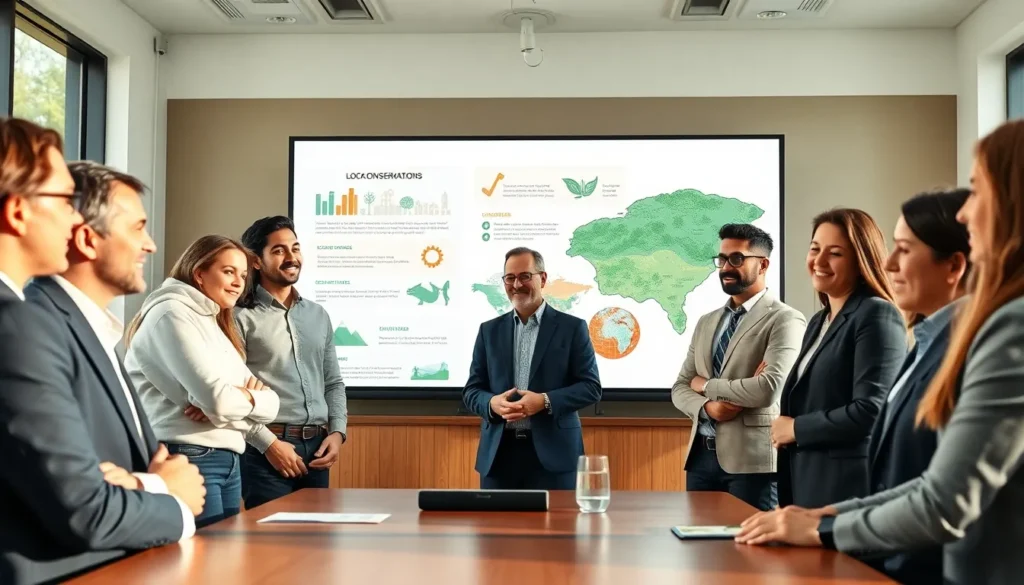In a world where ecological balance hangs by a thread, conservation efforts have never been more critical. Ever tried teaching a cat to fetch? It’s a tough gig. Now imagine tackling the challenges of saving our planet instead. This blog takes a humorous yet serious jump into why conservation matters, how local communities play a role, and the innovative strategies being used to protect our beautiful Earth. Grab a coffee, get comfy, and let’s explore the landscape of conservation together.
A Voicesofconservation.org Blog

Every second counts in conservation. Climate change, deforestation, and pollution threaten our planet’s biodiversity. These issues demand urgent action, not just from governments but from everyone. Why? Because the rich tapestry of life that exists today is the product of millions of years of evolution. Losing even a single thread can unravel entire ecosystems.
Conservation provides a lifeline to endangered species and helps maintain a balance between human activities and nature. It safeguards our natural resources, ensuring that future generations inherit a world where they can thrive, not just survive. Think of conservation as a cosmic insurance policy: the longer we wait to pay the premium, the more costly the outcomes.
Understanding the Role of Local Communities
Local communities often serve as the frontline warriors in the battle for conservation. They possess invaluable knowledge about their environment, passed down through generations. When communities are involved, conservation efforts reap rewards.
Take community-led marine protected areas, for example. Fish populations in these zones recover, and locals benefit from sustainable fishing practices. When people feel connected to their environment, they become invested in its preservation. It’s a win-win situation. By empowering local communities, conservation expands from a top-down approach to a collective grassroots movement. Who knew safeguarding the planet could bring neighbors together for a common cause?
Innovative Conservation Strategies
Innovation is the lifeblood of effective conservation efforts. As challenges morph and evolve, so must our strategies.
Spotlighting Successful Conservation Projects
Around the globe, projects are breaking new ground. For instance, wildlife corridors created in fragmented habitats allow species to roam safely. These corridors serve as ecological highways. Similarly, rewilding initiatives breathe new life into areas previously disturbed by human activities. The beauty of conservation lies in its adaptability: if something isn’t working, the community will brainstorm a new tactic.
Engaging Youth in Conservation Efforts
Youth are at the heart of the future of conservation. Engaging younger generations ensures the ideas and passions for environmental stewardship continue. Schools and organizations offer programs that instill a sense of responsibility and creativity. Occasionally, students transform mundane classrooms into vibrant learning hubs. From planting trees to preserving local waterways, kids become conservation champions, proving that age is just a number.
Challenges Faced by Conservationists
Even though the best intentions, conservationists encounter a slew of obstacles. Funding is often a significant hurdle, with many NGOs scrounging for monetary support. Then there’s the ever-growing issue of political interference. When conservation clashes with economic interests, tensions arise. Shuffling priorities can leave endangered species hanging.
Another challenge lies in raising awareness. Many people still underestimate the impacts of their daily habits. Educating communities about sustainable practices continues to be crucial, as ignorance can lead to resistance against conservation measures. Every conservationist knows that awareness can often be as tough to cultivate as planting a tree in concrete.
How Technology is Transforming Conservation
Technology is revolutionizing the landscape of conservation. With tools like drones, conservationists can monitor wildlife populations without disturbing their natural habitats. Data analysis and satellite imagery help track changes in ecosystems over time. Imagine having an eagle-eye view of forests and oceans, it’s like having superpowers.
Innovative apps enable communities to report wildlife sightings, creating invaluable data that assists in planning conservation strategies. In the digital age, technology doesn’t just enhance conservation: it amplifies collective action, allowing people from all walks of life to contribute to the efforts. The evolution of conservation technology proves that even the most grounded ideas can take flight.

